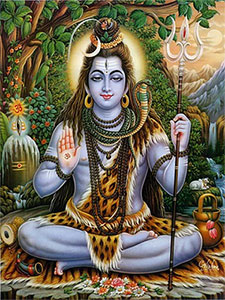Orange Color Symbolism Facts & Meaning: Zodiac, Omens, Dreams, and Myths
I
Orange Color Meaning
The color orange is a love-it-or-hate-it-color. Just like many colors, it inspires emotional reactions but more passionate. It is the only color on the visible light spectrum named after an object. The orange color depicts the color of the orange fruit and the hot sun. Orange is a considerable hot color that denotes the sensation of heat. It has been commonly associated with summer and bounty of fall harvest. The color orange also makes people think of Halloween and Thanksgiving. It is a brilliant color that talks fall foliage and ripe pumpkins.
The meaning of the color orange is primarily vibrancy and fun. It is a combination of the happiness associated with the color yellow and the energy associated with the color red. However, it is less aggressive than the color red as a result of the calming nature of yellow. The vibrancy of the color orange makes it stand out to inform danger that it has been used on safety equipment, high visibility clothing, and the indication of cautions such as in its use on traffic cones and construction zones. Using orange for safety puts an object apart from its surroundings. It can attract attention without having to be daring as the color red. It is an effective complementary contrast particularly to an azure environment.
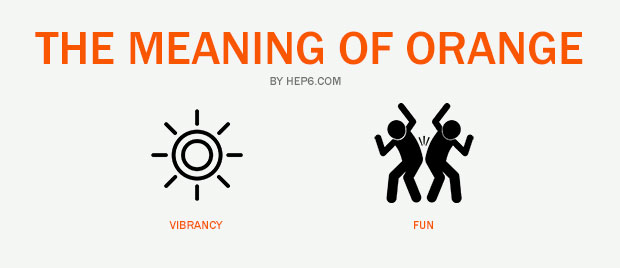
The vibrancy of the color orange also displays a polarizing energy of health and vitality that it is markedly related to vitamin C. The youthful color also brings the energy of fun that it has been used to connect with younger audiences such as kiddie shows. The color can also be handy to evoke tasty fruits bursting with juice that it has been helpful as a fun way to promote energy and tropical drinks.
Different shades of the color orange describe different meanings. Dark orange means distrust and selfishness. Red-orange represents pleasure. Golden orange is excellent for vitality and prestige. Amber helps with confidence and self-esteem. Light orange or peach gives good manners and communication. While a burnt orange color tends to signify pride and aggression.
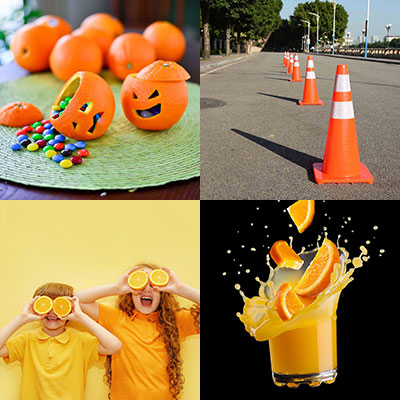
II
Orange Color History
The history of orange started centuries ago. The color can be verified to have been used by ancient Egyptians on tomb paintings and other purposes. An orange-reddish arsenic sulfur mineral called realgar was identified to be the source for the pigment. The use of the same mineral has later became popular throughout the Middle East. Another source that ancient Egyptians are found to have used is the arsenic sulfide mineral called the orpiment. It is an element that can be taken from the fumaroles of volcanoes. It was widely used until the 19th century but can be toxic because of the arsenic levels. The usage of the orpiment is common in the making of poison arrows. The orange fruit was only introduced in the 1300s which was brought worldwide by the French. The word “orange” as a color name came to be coined 200 years later.
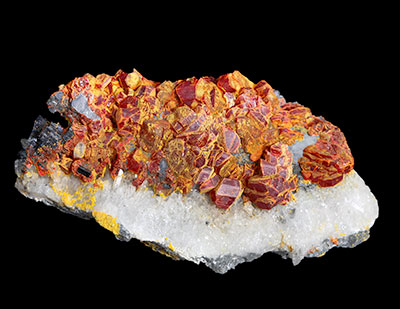
III
Orange Color Symbolism
Orange Color Positive Symbolism
Orange is an active color that makes people respond with heightened emotions and sharpened awareness. This makes it often associated with vibrant environment and high energy. Positive symbolisms of the orange color include good health, cheer, warmth, and excitement. Orange can be useful to bring a degree of positivity to help protect from difficult situations by not letting the person overshadowed with disappointment and grief. When life is often not sunny, the orange color can comfort a person into looking on the bright side of things. It brightens the mood and allows an energy that will keep you going until objectives are met. Orange color brings encouragement and motivation that should be taken into consideration daily. The revitalizing benefits can be gained even with small objects, may it be a mug or pen. It can inspire to make you feel stronger from a physical point of view allowing you to develop courage and a sense of competitiveness in performing tasks. The color orange is also said to be a social color. It enhances communication and invites people to become more open. It has been used as a decorative color for occasions to create good mood and encourage people talking. Using shades of orange to decorate the surroundings, or the tables especially, makes great time for eating and drinking considering that the color increases appetite. With this in contrast, it is best to avoid the color when on a diet. Orange is truly a color of joy that can promote wellness and emotional energy that can be inspiring to deal with disappointments, crushed pride, and wounded heart.
Orange Color Negative Symbolism
The color orange can be exhausting and forceful when overused. It is not a surprise for the color to have negative symbolisms, too. Excessive orange can be overpowering. It can be considered an extrovert color that makes people overlook limitations and instead become a show-off. Much orange encourages self-centeredness and self-serving properties. Orange is associated with attention-seeking characteristics so many designers use it carefully. Without having a proper balance of the orange color can be a risk. Too much orange brings arrogance, pride, and lack of empathy. Too little brings loneliness, depression, and low self-esteem.
IV
Orange Color Physical and Psychological Effects
The orange color is observed to influence physical changes in the body including heightened senses, increased hunger, and increased socialization. It is also said to stimulate the thyroid to boost metabolism. Since orange encourages appetite and hunger, it has been a common color in restaurants. The color can also affect the way the brain processes signals to interpret a flavor. Orange does not only affect emotions but considerably recalls scents tied to your memories. The color in combination with the scent makes the effects stronger, a person seems to experience a sense of taste. This is similar to how the eyes send signals to the brain which creates a perceived taste before the person makes an actual bite. The color orange is also believed to help enhance happiness, confidence, and decision making.

V
Orange Favorite Color: Traits and Personality
A large number of people find the color orange to be one of the least favorite. This has been observed among men and women to favor the color least likely as they age. In the 70s, orange has been a favorite trendy, hip color but eventually faded. There was an article in a 1991 issue of Forbes magazine that found consumers identifying the color to mean cheap. Positive personality traits associated with favoring the color include being enthusiastic, flamboyant, optimistic, agreeable, and sociable. Among the negative personality traits include dependent, proud, superficial, and attention-seeker.
VI
Orange Color Cultural Symbolism
Orange symbolizes warmth, autumn, and harvest in Western cultures. It is considered a traditional color that means changing of seasons or a form of transition as brought about by the color of leaves turning to orange as the summer ends. It is also widely recognized as a color of Halloween in relation to the color of pumpkins. In Europe, it is often a representation of amusement and entertainment. Considering that children find orange attractive and fun, the color is commonly found in the wigs of clowns. An orange dress can also be observed on paintings of Dionysus, the god of wine, fertility, and ecstasy. Buddhism sees orange as symbolic of illumination which is the utmost state of perfection. Similar to the holy men of India, the Buddhist monks can be seen wearing saffron colored robes to display renunciation of the external world. The yellow orange color usually depicts Krishna in India, a major deity in Hinduism. The orange color can also be seen worn by the sadhus or holy men of India who renounce the worldly life. It is a display of purity wherein the color orange is said to represent fire that burns all impurities. The philosophy of ancient China known as Confucianism finds the color a symbol of transformation. The saffron is historically a color of importance in the culture and is made of a very expensive dye. It is believed to be the perfect balance between red and yellow.
VII
Orange Color Zodiac Sign
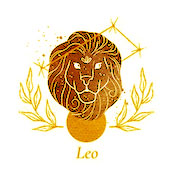
The orange color is the zodiac color for Leo and Aries. It is the color of social communication and optimism. It is associated with the masculine energy.
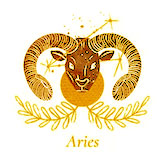
Being one of the most prominent fire signs in the zodiac, Leo is closely linked with the sun. Orange is a stunning, vibrant color where people born under Leo tend to display generosity, compassion, and a boundless sense of optimism. The orange color for Aries is a bright, almost neon orange that captures energy and excitement. People born under Aries embodies change, growth, energy, and a love of life.
VIII
Orange Color Omens and Superstitions
Some believed oranges to be a lucky fruit that brides are encouraged to carry an orange blossom in their bouquets to attract good luck. Another superstition says that if you love someone and you want the person to love you back, you should give that person an orange. It is also said that lovers who give each other oranges will be driven even more closely together.
IX
Orange Color in Dreams
You might be having an optimistic outlook on life when you dream of the color orange. It could be that you feel excited about what you are currently experiencing. Dreaming of the color shows that you are receptive and open-minded in dealing with situations. It indicates that you are looking into the bright side of life. When you dream of an orange clothing, it hints of your potential spiritual objectives. You may be striving for spiritual development. The presence of an orange flower in a dream shows that you are satisfied with life while a bouquet of orange flowers can symbolize you met true love. Dreaming of an item that changes into the color orange means that you look at things soberly.
X
Orange Color Mythology and Folklore
A Thailand legend says that nineteen hermits were pulverized by Phra Isuan, the Thai God of Destruction from Thai mythology, and enveloped them in a reddish orange cloth, which resulted to the creation of the Planet of Mars. Another folklore tells of oranges being exchanged among the unmarried as a subtle way of saying, “Let love blossom.”
